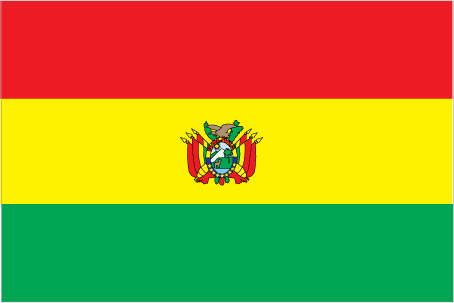To help inspire or plan your trip to Bolivia, some of its major attractions
for travellers are shown below, including some of the best natural, historical, cultural and adventure sites in the country.
These include all of UNESCO World Heritage Sites for Bolivia which represent the best
of the world's cultural and natural heritage.
Click on the icons below to focus on specific types of features
(click again to return to all).
|
|
|
|
|
|
|
|
|
|
|
|
 |
|---|---|---|---|---|---|---|---|---|---|---|---|
| Natural | History | Wildlife | Trekking | Cities | Religious Monument | Boat Journey | Rail Journey | Diving | Cultural | Adrenaline | UNESCO WHS |
Historical attractions in Bolivia
| Tiwanaku | |
|---|---|
The ruins at Tiwanaku near La Paz are Bolivia's largest archaeological site and the remains of the capital of powerful pre-Hispanic empire extending over northern Bolivia, southern Peru, northern Chile and north-western Argentina. Initially settled around 1200 BC, the empire reached its apogee between 500 and 900 AD and is distinct from other pre-Hispanic empires in the Americas. The Temple of Akapana and the Gate of the Sun are the most notable structures found at Tiwanaku. UNESCO World Heritage Site: Tiwanaku: Spiritual and Political Centre of the Tiwanaku Culture | |
| Potosí | |
|---|---|
The biggest silver lodes in the Americas were discovered in Cerro de Potosi, the mountain overlooking the city, in 1542 and the site soon became the world's largest industrial complex, producing more than half of the silver found in the continent. The silver production made the town one of the wealthiest in Latin America and fuelled the Spanish economy for almost 300 years. The human cost was horrific however, with an estimated 8 million people (indigenous and African slaves) dying in the mines. It's possible to visit the mines today, still used to extract tin, but it is an uncomfortable and distressing, though enlightening experience. Conditions for the miners are still difficult but are now much fairer as it is run as a co-operative. The silver wealth ensured that Potosi was one of the most beautiful colonial cities in the Americas and much of that heritage still exists today. The highest city in the world at 4,090 metres, Potosi has some grand colonial architecture and numerous ornate Baroque churches. Buildings of note include the Church of San Lorenzo, the Convent of Santa Teresa and the Casa de la Moneda, the original 18th century royal mint which is now a museum. UNESCO World Heritage Site: City of Potosí | |
| Historic City of Sucre | |
|---|---|
The colonial city of Sucre was founded in 1538 as La Plata and was the first capital of Bolivia. The city's name was changed to Chuquisaca in 1776 and later to Sucre in honour of the general who fought for Bolivian independence. The House of Freedom is Sucre is one of the country's most important historical monuments, where many of the keys events in the independence struggle took place. Today Sucre is the cultural and education centre of Bolivia, with a host of historic buildings and museums. Its 16th-century religious buildings include San Lázaro, San Francisco and Santo Domingo while the Cathedral contains the jewel encrusted ‘Virgen do Guadalupe’ by Bernardo Britti. The colonial ambience and student culture make Sucre a great city to explore and enjoy while the surrounding countryside is ideal for hiking, mountain biking and horse riding. UNESCO World Heritage Site: Historic City of Sucre | |
| Fuerte de Samaipata | |
|---|---|
The archaeological site of Samaipata was an Inca settlement occupied between the 14th and 16th centuries. The site consists of two parts - the ceremonial centre on the hill with its huge sculptured rock and many carvings, unique in the Americas, and the administrative and residential district to the south. UNESCO World Heritage Site: Fuerte de Samaipata | |
| Jesuit Missions of the Chiquitos | |
|---|---|
Jesuit fathers arrived in the Viceroyalty of Peru in the 16th century, sent by the Spanish Crown to bring Christianity to the indigenous people. Between 1696 and 1760, they built six reducciones - San Francisco Javier, Concepción, Santa Ana, San Miguel, San Rafael and San José, settlements of Christianised Indians which were inspired by the ideal cities of 16th century philosophers. The reducciones were laid out around a large rectangular space, with houses regularly spaced along three sides and the church, workshop and schools along the fourth. UNESCO World Heritage Site: Jesuit Missions of the Chiquitos | |





